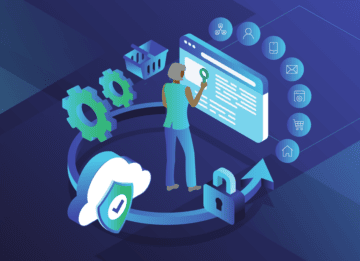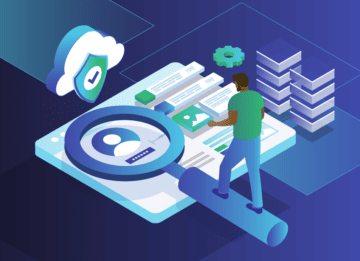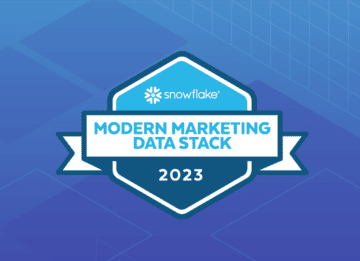
CDPs: What is a CDP and what to look for?
aCDPs: What is a CDP and what to look for?
Customers’ increased desire for personalized messaging comes with the need for you to better understand them. It can be difficult to sift through and connect the disparate silos storing behavioral data, demographic data, and transactional data. This can make it challenging for you to connect a customer service call to a previous purchase to an unauthenticated website visit and create that personalized customer experience across channels and devices.
The promise of a CDP is connecting all of these touchpoints.
Defining a CDP
While there are many different definitions of a CDP floating out there, the CDP Institute defines a Customer Data Platform as “packaged software that creates a persistent, unified customer database that is accessible to other systems.”
Hubspot simplifies that definition further, explaining that a CDP “aggregates and organizes customer data across a variety of touchpoints and is used by other software, systems, and marketing efforts. CDPs collect and structure real-time data into individual, centralized customer profiles.” And as Gartner® states, “A CDP is a marketing system that unifies a company’s customer data from marketing and other channels to enable customer modeling and optimize the timing and targeting of messages and offers. It includes a user-friendly interface that helps activate customer data and enable personalization across multiple channels.” [1]
By organizing your customer data from various sources, a CDP can help you understand your customers by consolidating data from various touchpoints, helping you create a 360-degree picture of how they engage on your website, your app, your platform, etc.
How You Can Use a CDP
Imagine a prospect, Jessie Lee, performs an organic search for vitamins on her laptop and finds your website. A couple of days later, she visits your website again, this time from her phone. A week later, she signs up for your newsletter. Upon receiving your newsletter the following month, she signs up for a free trial. After the free trial expires, Jessie doesn’t visit again for a few weeks but then signs up for a monthly subscription using a different email address.
Without a CDP, these touchpoints are stored all across your marketing ecosystem. This means you might not make the connection between all of Jessie’s engagements and preferences. But a CDP can act as the first step in a persistent Identity Resolution solution, unifying and consolidating all of your data points into a single customer view to better inform you of Jessie Lee’s engagements.
What to Look for in Your CDP
Gartner research revealed that, “Gartner’s 2020 Marketing Technology Survey finds that marketer adoption of customer data platforms (CDPs) continues to grow: 87% of respondents fully deployed or are deploying a CDP, up from 74% in 2019.” [1]
Determining the best CDP for your business needs comes down to what you need it for. Sure, you’re going to consolidate your customer data into a unified database–but what’s your ultimate goal doing so?
Are you trying to:
- Combine the physical and digital worlds
- Improve your targeted advertising
- Create a personalized customer journey
- Comply with privacy legislation
Defining the issues you’re trying to solve will help you narrow down which CDP is best for your business. And after you’ve prioritized your top use cases, you need to ensure your chosen CDP will easily integrate with your existing tools, platforms, etc.
The Challenges of a CDP
Even with the promises a CDP makes, they’re not a cure-all solution. Gartner also reported: “Marketers report high utilization of CDP capabilities, yet “lack of a customer data foundation” remains a top impediment to success. This underscores CDP vendors’ struggle in delivering against the expectation of unified customer data”[1]
This struggle highlights the challenge CDP vendors have when it comes to the widespread expectation of what unified data can do. When used correctly, a CDP is a powerful tool to gain a better understanding of your prospects and customers. But it should only be part of your greater strategy.
How FullContact Solves the Customer Data Unification Challenge
Consolidating touchpoints is a single step in a broader Identity strategy. Instead of paying for redundant services through numerous CDPs, an easy solution is to find an Identity Resolution partner, like FullContact.
What this partner does is act as the hub for identity. An Identity Resolution partner provides external identity observation beyond your brand’s four walls, providing deeper insight into your customers, as well as integration to third-party enrichment providers. Real-time resolution based on a true identity graph empowers you to leverage first-party identifiers and external identity the moment your customers and prospects engage while maintaining privacy at the person-level.
FullContact’s Resolve empowers CDPs to unify all pieces of their customers’ fragmented customer, prospect, and user data to an individual.
If you’d like to discover how FullContact’s Identity Resolution capabilities can be easily integrated into your CDP, talk with one of our experts today!
[1] Gartner, “Survey Analysis: Customer Data Platform Use Is High, Yet Customer Data Management Challenges Persist”, Benjamin Bloom, Marketing Research Team, 17 June 2021
GARTNER is a registered trademark and service mark of Gartner, Inc. and/or its affiliates in the U.S. and internationally and is used herein with permission
Recent Blogs
-
 September 21, 2023 Discover How FullContact is Building Trusted Customer Relationships through Snowflake's Native Application Framework Customer 360, Website Recognition, Identity Resolution
September 21, 2023 Discover How FullContact is Building Trusted Customer Relationships through Snowflake's Native Application Framework Customer 360, Website Recognition, Identity Resolution -
 September 20, 2023 Transform Your Customer Experience with FullContact Customer Recognition and Boost Your Conversions Website Recognition, Identity Resolution
September 20, 2023 Transform Your Customer Experience with FullContact Customer Recognition and Boost Your Conversions Website Recognition, Identity Resolution -
 September 14, 2023 FullContact Recognized as a Leader in Snowflake’s Modern Marketing Data Stack Report FullContact News, Partnership
September 14, 2023 FullContact Recognized as a Leader in Snowflake’s Modern Marketing Data Stack Report FullContact News, Partnership